
Packaging waste is a potentially serious reputational challenge for the emerging recipe box sector. We asked Hello Fresh, Gousto, Riverford and Abel & Cole to set out their policies on the issue.
Hello Fresh
(Answers supplied by Patrick Drake, co-founder and head chef)
What are you doing to minimise packaging waste?
Minimising packaging waste is always at the forefront of our mind, we aim to only package products within the box that require packaging to keep them fresh or protect them from being damaged while in transit. We are currently developing a 5 year roadmap to reduce our packaging footprint further and transfer to more sustainable, environmentally friendly packaging that is biodegradable or re-usable.
Are you currently collecting packaging waste from your customers? Do you have any plans to start doing so?
Yes, we currently offer a free recycling scheme for our customers nationwide. We are working on expanding our recycling scheme further in the future so we can make it even easier for our customers to recycle. With the development of our own logistics capability within certain cities we will be able to use re-usable containers & packaging for customers to return each week.
Do you measure/track the amount of household packaging waste your business produces in any form?
We track and measure wastage within our own Supply Chain and we are finding ways to reduce it constantly thanks to ongoing improvements. Once packaging has reached our customers they have a choice as to whether or not they recycle it. As we want to encourage them to recycle it we’re constantly making that process as easy as possible for them.
What percentage of the packaging you use is recyclable?
We are focussed not only on getting our packaging to the point of being 100% recyclable, but also moving towards packaging that is bio-degradable and compostable. Our thermal packaging is compost-able at this stage but we are developing a solution that is created using recycled coffee bags and old Jute which would be able to be recycled or turned into compost. We want to work towards being sustainable with our packaging, there have been some amazing advancements over the years with plastics that are made from rice and materials that are compost-able.
What advice do you give your customers around what they should do with packaging they get from you?
Every customer receives a welcome booklet in their very first box telling them all the details of our recycling scheme.
How do you respond to criticism that while recipe box schemes may minimse food waste, the need to pack tiny amounts of individual ingredients (often in plastic bags) means packaging waste increases compared with a standards supermarket shop?
If you compare the packaging of our ingredients and the packaging of the same ingredients being bought in the supermarket (even if in bigger portions), it becomes very clear that HelloFresh a) doesn’t produce significantly more waste and b) our waste is largely recyclable e.g. spices wrapped in paper instead of plastic, compared to the waste of supermarket products.
We created the recipe box category in the UK to disrupt the status quo and we aim to do that with all elements of our service, including our packaging. Ultimately on every level, be it ingredients, delivery, packaging or otherwise, we aim to innovate and be number 1 in the market.
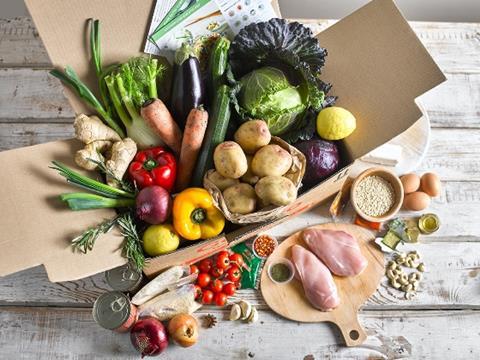
Gousto
(Answers supplied by founder Timo Schmidt)
What are you doing to minimise packaging waste?
First, we use bio degradable and recyclable packaging everywhere, and we encourage consumers to re-purpose packaging where feasible. Our insulation is made out of sheep wool that is 100% bio degradable. Second, we only use packaging where necessary. Third, we are collaborating with leading packaging firms and universities to invent better solutions: for instance we are currently running a trial using edible packaging material, so it is 100% compostable, recyclable and you can actually eat it - it has an incredible environmental benefit and hopefully all our tests come out well. Four, we measure packaging waste religiously, reducing it constantly.
Are you currently collecting packaging waste from your customers? Do you have any plans to start doing so?
Yes, via collectPlus, Doddle and other collection options. Re-using packaging is an important step in the right direction, and we are testing constantly to roll out even more sustainable solutions.
Do you measure/track the amount of household packaging waste your business produces in any form?
Yes, we measure and track the exact packaging material we use per box, recipe, and ingredient. As part of the “Producer Responsibility Obligations Regulation” we also pay tax on packaging waste, an initiative the government introduced last year which we very much welcomed (rest assured, we pay a fraction of what supermarkets would pay at our revenue level).
One important point: if a supermarket wastes 20% of food, and the household wastes 20% of food, we not only save 40% of food waste, but we also save the packaging that was wasted with the 40% of total food wasted. This is really important to understand as it explains why supermarkets use significantly more packaging than us, despite us repackaging food.
What percentage of the packaging you use is recyclable?
95-100%
What advice do you give your customers around what they should do with packaging they get from you?
Our customers use our biodegradable packaging made out of natural wool for plant compost, draft insulation, keeping picnics cool, storage, pet bedding or entertainment for kids, arts & crafts. We also encourage recycling where re-use isn’t possible.
How do you respond to criticism that while recipe box schemes may minimise food waste, the need to pack tiny amounts of individual ingredients (often in plastic bags) means packaging waste increases compared with a standards supermarket shop?
First of all, there is a food crisis in the UK that is horrendous, and it’s a big reason why so many smart people start working at Gousto. You cannot possibly overstate the importance of reducing food waste, and at company and household level we are saving 40% of food waste. It’s incredible, and it matters the world to us. As pointed out above, food waste leads to packaging waste. If you cut food waste by 40%, you automatically save huge packaging waste, even if you than repackage a few items. This is a net saving in packaging waste over supermarkets.
Now whilst we passionately want to reduce packaging waste to an absolute minimum, the truth is that wasting an apple creates 0.5 kilos of food waste, whilst our recyclable plastic weighs 0.01 kilo, so from a landfill perspective we have successfully reduced total waste by a huge amount.
Rome wasn’t built over night, and rest assured we obsess about our environmental impact every day. We are certified organic by the Soil Association and only use high quality British farmed meat. I see Gousto as an ethical business. We have hugely reduced food waste and therefore total waste, and now we are hugely reducing packaging waste. This has real impact on society.
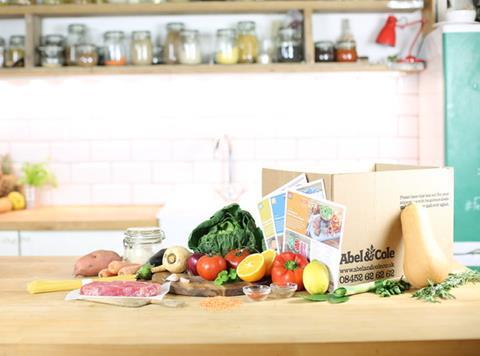
Abel & Cole
(Answers supplied by head of recipe boxes Hannah Shrimpton)
What are you doing to minimise packaging waste?
We do our absolute best to minimise packaging. We use as little packaging as possible but where it is necessary almost all of our packaging can either be recycled by our customers or collected by our delivery drivers and reused by us or recycled. When we’re planning our recipe boxes we assess packaging on a weekly basis and only package what’s absolutely necessary, so when you open up an Abel & Cole recipe box the first thing you see is the unpackaged fruit and veg and not a collection of brown paper bags. We also review our contents constantly to try to make sure they are the right size, which has a knock on effect of reducing packaging. We’ve worked with a supplier recently to produce two-person sized bag of salad, giving customers the right amount of salad for their plates but also using a smaller, recyclable bag.
Are you currently collecting packaging waste from your customers? Do you have any plans to start doing so?
Our own delivery drivers visit our customers every week so collect our packaging when they deliver a new order, and our customers love that we take their empties back to be reused or recycled.
Do you measure/track the amount of household packaging waste your business produces in any form?
We measure all of our packaging waste, it’s a legal requirement.
What percentage of the packaging you use is recyclable?
We use cardboard, wool, plastic and glass, around 95 per cent of which are recyclable. We take packaging back from our customers so even if they can’t recycle it, we can do it for them. A small amount of herbs and spices packaging is not currently recyclable but now our recipe box volumes are so much higher we’re working on a bespoke solution with our supplier.
What advice do you give your customers around what they should do with packaging they get from you?
On our boxes we ask our customers to leave the box and all the gubbins out for our drivers. We also give new customers a welcome postcard which says packaging goes back to Veg HQ.
How do you respond to criticism that while recipe box schemes may minimise food waste, the need to pack tiny amounts of individual ingredients (often in plastic bags) means packaging waste increases compared with a standards supermarket shop?
We do our absolute best to minimise packaging. We use as little packaging as possible but where it is necessary almost all of our packaging can either be recycled by our customers or collected by our delivery drivers and reused by us or recycled.
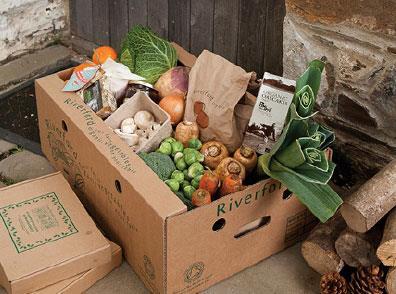
Riverford
We believe we are unique in the recipe box market in that as well as being 100% organic, we have a closed distribution loop as opposed to using couriers, ie our local Riverford vegmen and vegladies collect boxes and packaging and they come back to our farms for recycling or re-use. Whilst we don’t have any hard proof as we don’t know the systems in place with other recipe box providers, we’re sure we re-use and recycle more than any of our competitors as a result of this.
The outer box, card insert, ice packs, Woolcool insulation (better than polystyrene) are all reused. Everything else is sorted for recycling as appropriate.
As an ethically minded business we entered the recipe box sector conscious that we needed to minimise waste. We have won at the Observer Ethical Awards repeatedly (most recently Ethical Product of the Decade in 2015 for our veg boxes) and have also carried out lots of research around packaging. We don’t believe in greenwash but work to get to the bottom of what is genuinely better for the environment, for example we switched from using biodegradable plastic bags to standard after we found that the carbon footprint of the former was greater than the latter.








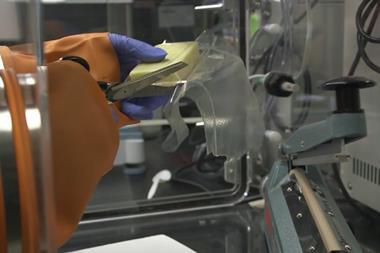


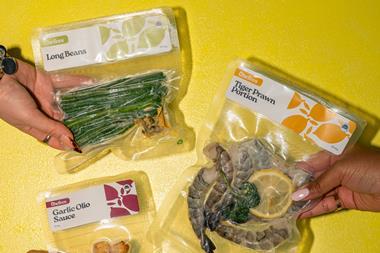



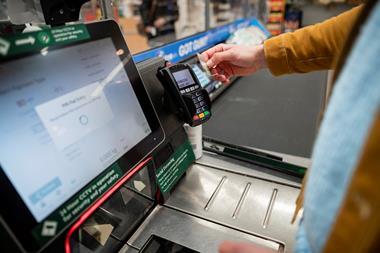
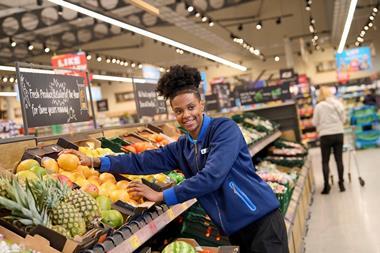

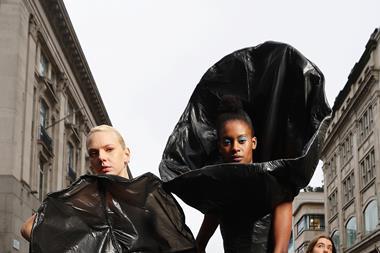
No comments yet